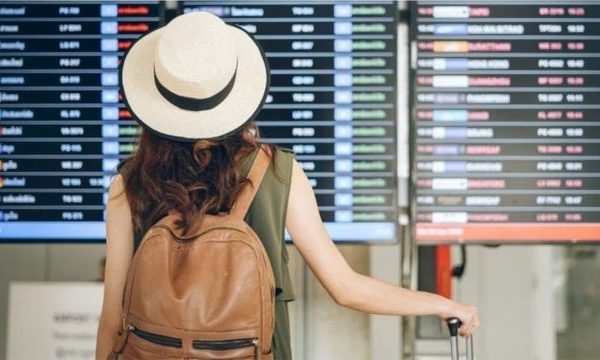
The technical term is derived from ancient Greek, and therefore refers to a psychological condition characterized by the presence of an intense and irrational fear associated with the experience of flying.
Read Also:
Where does this phobia come from?Fear of flying is more common than one might think. This phobia often occurs due to a lack of familiarity with flying compared to other, more traditional means of transportation. In most cases, this initial caution disappears or eases with experience and learning. However, if this feeling of fear continues and the fear of flying reaches a high level, to the point of causing severe anxiety before or during the flight, we can talk about a phobia.
Expert opinion
Some people begin to suffer from this phobia after negative or traumatic experiences, such as rough flights or plane crashes. In other cases, aerophobia can be directly related to phobias and other forms of anxiety (such as claustrophobia, fear of enclosed spaces; acrophobia, fear of heights; and agoraphobia, ie fear of open and crowded places from which it is impossible to leave.
Aerophobia can also appear suddenly, without any apparent direct cause, and in people who have not previously shown significant symptoms of anxiety.
In some cases, this phobia may develop after a stressful or traumatic event, such as death, separation, relocation, or new job responsibilities. Thus, the plane becomes the object through which stress and anxiety can find an outlet.
However, in many cases, behind the aerophobia lies the need for control. The subjects most exposed to this phobia are those who do not have a good relationship with unforeseen situations and who feel the need to always have everything under control.
Altitude and the feeling of being suspended in the air can also contribute to this sense of loss of control.
Symptoms and manifestations of aerophobia
When we are at high altitudes and in a means of transport that we are not driving, a stimulation of the vestibular, visual and proprioceptive apparatus can occur. The body can struggle to adapt, causing unpleasant sensations such as dizziness, vomiting and nausea.
These symptoms are very common in those suffering from "airsickness" and are also seen in acrophobia and motion sickness ("motion sickness").
Anxiety and restlessness associated with flying can manifest in a variety of ways; ranging from a slight tension to a deep and uncontrolled feeling of anxiety, which can lead to real symptomatic manifestations, such as, for example, panic attacks during the flight or before the trip.
Physical symptoms of aerophobia include: sweating, shortness of breath, increased heart rate and blood pressure, hot flushes, numbness, muscle tension, anxiety tremors, dizziness, confusion, and gastrointestinal upset.
The physical manifestations of the fear of flying can be accompanied by psychological symptoms, such as feelings of restlessness, catastrophic fantasies and fear of losing control.
10 tips for safer flying
There are some tricks and precautions that can be taken to alleviate the discomfort associated with flying. Here are 10 simple tips to try to overcome your fear and face air travel with more peace of mind:
Inform
Many of the situations that create panic in aerophobic subjects are due to misinterpretations of the normal conditions associated with flying. Documenting and gaining more knowledge of aircraft operations, flight phases and airport security processes can help to better understand the dynamics of travel and allay one's fears.
Arrival at the airport on time
Delay or lack of time generates anxiety and stress. Therefore, it is advisable to plan your trip so that you are at the airport well in advance and thus able to carry out the control and security operations without haste and more calmly.
Choose your seat on the plane
Choosing a place where you feel comfortable can help ease the tension. For example, people with vertigo may be better off avoiding window seats and opting for an aisle seat.
Consulting the information provided by the airlines regarding the seats near the emergency exits, the most spacious seats, as well as the position of the engines can be a good solution to choose the seat most in line with your needs.
Choose comfortable clothing
It is good practice to wear comfortable clothes and choose fabrics that promote sweating, avoiding tight or uncomfortable clothes that may cause discomfort during the flight.
Avoid stimulant drinks
Before and during the flight, it is advisable to avoid drinks containing caffeine, theine or alcohol as they can increase anxiety. Better to choose water or herbal teas instead.
Listen to the safety instructions
It is advised to pay attention to the information provided by the flight crew during safety briefings. Knowing what to expect and how to react in an emergency can help reduce anxiety.
Interact with the flight crew
Flight attendants are fully available to passengers and are trained to support and reassure passengers. Talking to the crew and expressing your anxieties and insecurities can be a lifesaver for those who fear flying.
Focus on something else
An effective remedy to overcome fear is to try to distract yourself during the flight by engaging in other activities. Reading a book, listening to music or chatting with your seat mates are all great pastimes to keep your mind occupied during the flight and to relax.
Learn relaxation techniques
Relaxation techniques, such as autogenic training or Jacobson progressive relaxation, can help control fear. Many of these techniques are based on diaphragmatic breathing: learning to control your breath is, in fact, a great way to relieve anxiety and stress in everyday life, as well as in flight.
Take a course
Many airlines, to spread the message that flying is safe, offer specific courses aimed at helping those suffering from aerophobia learn how to manage their fear and live the experience of flying more calmly.

Comments